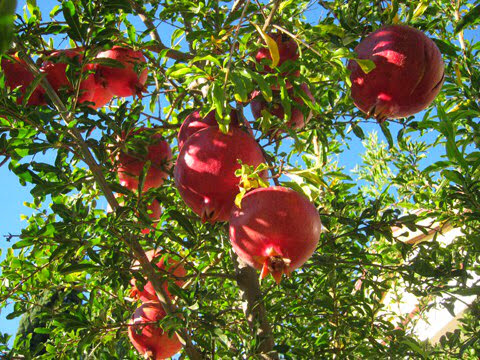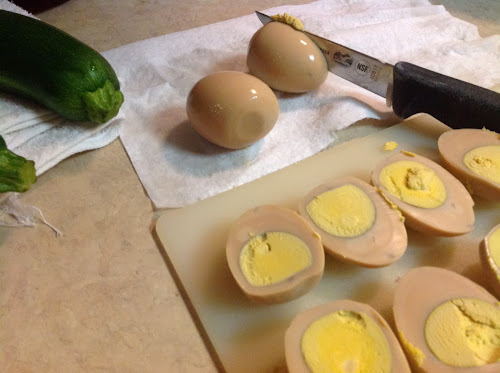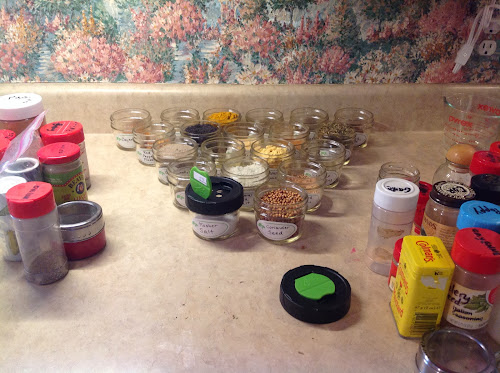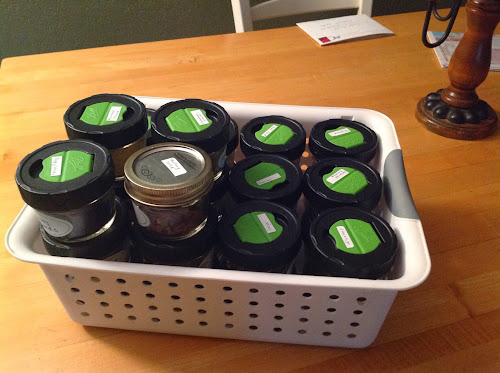Another post in my Five Memorable series. Trees. I like trees, a lot. Especially great, big, long-lived creatures. When I look around my place and lean back to look up into the distant canopy of live oaks, I can hardly believe that I own them. I actually own them! I would have the right to chop them down if I wanted to. (shudder) It just doesn't seem right. They are older than I am, I'm sure. I like to think about how the roots go down, weaving in among the rocky dirt, collecting nutrients and water, anchoring their trunks in place with as much material below ground as there is above. I am luxuriating in the time I wil have to get to know them all.
I've had a few favorite or memorable trees pass through my life, and now I'll share them with you.
The Old Willow Tree
When we were kids, we moved from a little rent house to a 4 acre piece of property in the country. The house wasn't any bigger, but the grounds were covered in pastures and trees and shrubs and weeds and mysteries to be explored. One big fixture that stood at the edge of the front lawn was all we needed for playground equipment: a large, old, drooping weeping willow tree. It didn't look even and well-groomed like the illustrations you would see in books. Several large-diameter limbs arched up and over the trunk, so high up in the air that when you went under the tree it seemed like you were in the middle of a gothic cathedral. Long slender branches and twigs hung down to brush the ground like green beaded curtains. You could sort of see out, but you couldn't see in.
We were Tarzan! Ahhhee-ee-ee-ee-ahhh! Standing on top of a rock or a chair, clutching an armload of branches we would leap into the air, swinging through the african jungle to drop below in the clearing. We played house, making little brooms. With a sweep of the fingers down a leafy twig you could collect a compact spray of leaves. Holding them at the base of a suitable stick, you could lash them in place with a piece of freshly stripped bark from another twig. We played Barbies underneath in the cool shade. I didn't need a Ken doll. I could have any type of boyfriend for her that I wanted by snapping a willow stick at just the right height (one inch taller than Barbie's hairdo) and imagining him. We braided and tied off jewelry from the flexible twigs. We made Indian costumes and whips. When my sister would bring back a coffee can of red dirt from up the road, we would mix in water to make red paint and, using willow leaf paintbrushes, paint boards, rocks, the fence, and our faces.
One fall day, as we walked home from school, the horizen seemed different. We could see the southern sky across the front yard. The willow tree lay, down like a dead elephant. We were stricken and heartbroken. And angry. "Why did you cut it down?" we cried. The truth was that willow trees are not long-lived, and this fellow was elderly. My dad could see that the limbs were not as strong as he was comfortable with, seeing as how much time we spent underneath it, and swinging on it. So they had it chopped down. Even then, it hadn't lost all its play value. We climbed and crawled all over its carcass, running along the trunk and limbs as though it was a multibranched trail, until finally, all the pieces were cut off of it and disposed of. And then that was that.
The Oak at the Corner

At our home in the country, we were surrounded by foothills, swampy areas, orange groves, and valley oak trees. Some of these trees were old and massive. In our neighborhood, we all had a special fondness for the Oak at the Corner. Our neighborhood was within walking distance to our K-8th grade school, a little country school serving the little town of Lemon Cove and surrounding community. To a third grader, it was a long walk home -- in city terms, probably a couple blocks worth. After you crossed the busy highway (Stop! Look both ways. Now go!) and walked down the rough-laid asphalt, you turned the corner onto the dirt and gravel section of your journey, went a little further, and then you were home. In the hot months, that could be a long sweaty walk with the sun beating down on you. But after about mid-morning, a treat awaited at the corner. Wide-spread, cool, dark shade from the huge valley oak growing there. All the kids in the neighborhood hung out there a lot. We'd stand there, straddling our bikes, planning where we would ride next. We would cal each other on the telephone. "Meet you at the oak tree!" We didn't scramble on or around it, since it was behind the old barbed wire fence of someone else's pasture, and weeds and nettles grew around the base of it. But in spite of that, we felt somewhat possessive of it. In a sense, we OWNED it. We used it's shade. It was OUR landmark, OUR hangout. It hads always been there; it would always be there.
Then one day, when we were a little older and drove cars to meet each other instead of bikes, a mighty CRACK was heard. The oak at the corner had split right in two, right down the middle of the fat, forked trunk. Fully half the oak tree was lying down, across the barbed wire fence, across the road at the corner, acoss the ditch.
Just for old time's sake, I was glad part of the tree was still standing, but it just was never quite the same.
The Pomegranate in the Summerhays' Pasture
In our country neighborhood in the foothills, we could easily let ourselves feel like we could live off the land if we needed to. In the moist shade grew miners lettuce and sour sheepshank weeds. In the neighbor's boggy pasture grew fields of spearmint. Orange groves and individual citrus trees were ubiquitous. We could even find some lemon and grapefruit trees tucked in one unkempt grove. In October we would pick buckets of small olives to cure from the wild olive trees growing in the brush, and, of course, there were stands of wild or feral pomegranate trees. Because they were not irrigated, they would usually ripen and split early, but we took full advantage of them when they were good to eat. We would come home with black hands and mouths, stained from the red juice. We would also bring them home and seed them for Mom to make jelly out of.
Pomegranate trees are brushy and spiky all the way down to the ground. There was one exception though. And that was the pomegranate in the Summerhay's pasture.
The Summerhays' pasture adjoined our own, and, like our own, was mostly bare of trees, about a couple acres big. In our day, fences were not borders or boundaries. They were only meant for one thing, and that was keeping livestock in. So were were experts at climbing over various kinds of fences.
(That reminds me of a quick story. We had a little fire get away from our burn pile recently and our whole family was busy stomping it out. I hollered for my teenage daughter to go over the neighbor's fence and help my husband put out the advancing edge of flames. She ran over to the fence, milled around a little bit, and then plaintively called out, "How do I get over?" I was a little dumfounded to realize she didn't have any experience in fence-climbing.)
About in the middle of their pasture stood a lone pomegranate tree. This tree actually had a bare trunk. The branches didn't begin until about my shoulders. And that was because there were some cows in there, who kept the growth trimmed up. The one thing I always wanted to be sure of before I went fence climbing was, were there any cows in there and where were they now? I was afraid of large animals and tried to avoid them. And that was the beauty of the Summerhay's pomegranate tree. If you needed to take that shortcut, or you were just messing around exploring, that lone tree was your safety in their pasture. As long as you knew you could reach it before the cows could reach you, you would be ok. I spent more than one occaision sitting on a branch in that tree looking at black and white cows milling around beneath me, waiting for them to get tired of being there and moving away. Far enough away so that I knew I could get to the fence before they could get to me.
Our Umbrella Tree
I think most people call them "chinaberry trees," but we always called ours an umbrella tree. They must have been quite fashionable in the fifties, because you saw them everwhere. My grandparents had half a dozen of them. They are native to Asia, and are relatively fast-growing. The way they were usually handled was this: About three or four main limbs were allowed to spread out of the main trunk at about five feet tall. Every other year all growth on these limbs was stubbed off in the fall, leaving a naked, dead looking thing, until spring, when slim new growth would appear, making a light canopy for that summer. By the next summer after that, the tree was lush and full again, but if you didn't prune it that fall, it would quickly grow thick and big and out of control. The leaves were pinnate, like feathery fronds, and the fruits were green orbs, a little bigger than peas.
Our umbrella tree grew in the back yard, sort of on the dividing line between the back and the side yard. It made some well-needed shade there at the southwest corner of the house, and was part of our play area when we were cast out of the house on lazy summer days upon saying, "I'm bored!" Sometimes we climbed it, but it wasn't a particularly interesting climbing tree, since the only place you could really go was the crotch of the tree, due to the pruning practices. Everything in our kid-land was rated on its play value, and the umbrella tree stacked up pretty well. We called the chinaberries, "poison potatoes." They grew in prolific sprays and no one cared about them. So we could strip them off the tree and throw them at each other. We could gather bags of them and pretend they were money as we practiced commerce. We could set out dishes and bafles and play, "County fair midway," where we had to throw the "coins" in the targets to win prizes. When the poison potatoes ripened and fell off the tree, they started to look more like their namesake, with dessicated mealy flesh around a pit, covered by a flabby beige skin. They felt dangerous to handle, because they were deadly poison. Weren't they even called "poison" potatoes? The other play value we enjoyed immensely was making little people out of the sticks that began falling off the tree along with the leaves. The sticks were brittle, and we would break them off an inch or two above the natural separation point at the thicker base. Then, leaving a trail of skin connected to the stub, we would wind it around and around, peeling a strip of skin from the long end as we went. When you were done, the skin would uncoil like curly ribbon around the "head" of the little stick person you had made.
Early one sunday morning while getting ready for Sunday school, we heard a crack! and a soft whoosh! Our umbrella tree had split down the middle and fallen across the outside summer bed, where, thankfully no one was sleeping at the moment. Later, Dad took the chainsaw and finished off the tree, leaving a little ground level platform with a remnant of play value in it. We didn't mind too much. The sticks were a pain to rake up in the fall, and there were plenty more poison potatoes to play with at my grandparents'.
The Cork Oaks

Even though there were half a dozen cork oaks on our homeplace, I'll use the biggest, fastest-growing best located cork to be the stand-in. It stood by the lane, on the western side of the property, shading the hot, late afternoon sun and partially screening the back patio from view of the stray car or two bouncing down the gravel road. This was not my childhood home, but my children's childhood home.
When we lived in Davis, near the university, we took frequent walks in the arboretum and around the campus. Huge cork oaks, native to Africa lined the streets and grew in groves along the lawns. Cork oaks are just what they sound like; the bark is harvested to make cork products, like wine corks. It is very curious looking, fissured and thick, showing the unmistakeable grain of cork. My brother-in-law presented us with a dozen oak sprouts a year after we had given him a bucket of cork oak acorns for Christmas. We had just moved to our first very own home on an acre and a half, and I carefully planted those little sprouts everywhere I thought we might want a tree.
They grew surprisingly fast, along with the dozen or more valley oaks I also planted. After almost twenty years, my favorite, biggest, cork oak towered high, its deep, fissured bark tempting you to scrape off soft chunks of cork, but instead delivering a hard, resistant surface. It was tall, very tall. Don't ask me to estimate. I am terrible at estimating vertical distance. You will know that if you have ever seen my video of me
placing a bear bag in a tree. But its shade was wonderful, and since it is a live oak, it continued screening the back patio all year long.
My oaks were the one sorrow I had over selling our place. I hoped the next owners would cherish those trees like I did. I was afraid we would end up in a new place without mature trees. I couldn't wait another twenty years for big trees!
When we bought our new house, I felt rewarded for the care I had taken in planting my sprouts so long ago. Almost a dozen humongous live oak trees and a giant valley oak grow on our acre of land. The house is shaded during the hottest part of the day by these massive giants, along with the biggest liquid amber tree I have ever seen. (Ok, so the liquid amber is a sort of throwaway compared to the others.) I stand under them and stare and think. And whoever planted them; the squirrels, chance, or God, they feel like a reward for planting those other long-lived trees that I didn't even know for sure I would be the one to enjoy their maturity.
























